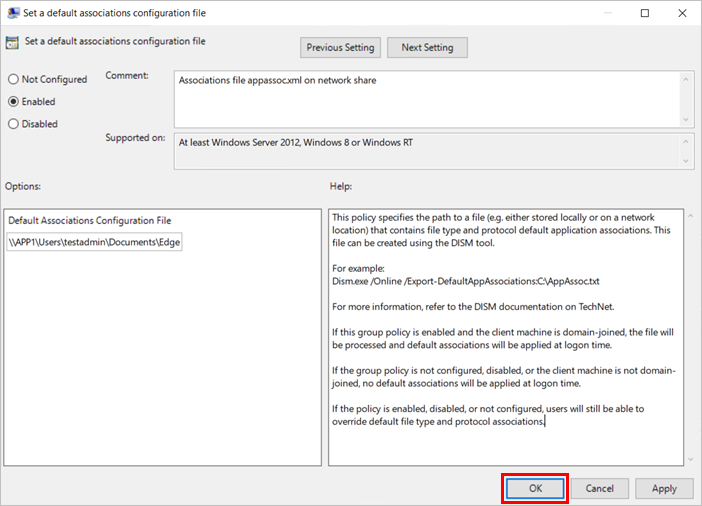
- #WINDOWS 8.1 HOW TO CHANGE DEFAULT FILE LOCATION INSTALL#
- #WINDOWS 8.1 HOW TO CHANGE DEFAULT FILE LOCATION PC#
- #WINDOWS 8.1 HOW TO CHANGE DEFAULT FILE LOCATION DOWNLOAD#
#WINDOWS 8.1 HOW TO CHANGE DEFAULT FILE LOCATION PC#
Turned the OneDrive autosave for everything to “This PC Only”.Moved the OneDrive location after my initial logon forced it in the OS drive.
#WINDOWS 8.1 HOW TO CHANGE DEFAULT FILE LOCATION INSTALL#
So I just recently did a clean install for the 1709 update and when through the what’s new and saw the “change where new content is saved”… not understanding why only the drive instead of an actual directory but maybe?! Anyway, I started the normal ritual of fighting windows to get things where I would like instead of where they would like it.
#WINDOWS 8.1 HOW TO CHANGE DEFAULT FILE LOCATION DOWNLOAD#
To see the digital signature, select the publisher link in the security warning dialog box that opens when you first download the file.The question is “Is there any way to actually change the default save location” for Documents especially? I apologize for the description but most of it is relevant to the question. If the file has a digital signature, make sure that the signature is valid and the file is from a trusted location. Only download files from sites that you trust.

Here are some precautions you can take to help protect your PC when you download files: There are always risks to downloading files from the web.

Make sure you recognize and trust the publisher before you save or open the download. If you see a security warning that tells you the publisher of this program couldn't be verified, this means that Internet Explorer doesn't recognize the site or organization asking you to download the file. Not all files you're warned about are malicious, but it's important to make sure you trust the site you're downloading from, and that you really want to download the file. If Internet Explorer identifies a download as suspicious, you'll be notified so you can decide whether or not to save, run, or open the file. When you download a file, Internet Explorer checks for clues that the download is malicious or potentially harmful to your PC. If a file that needs an add-on won't open, you might have an older version of the add-on, which needs to be updated. Internet Explorer uses add-ons such as Adobe Reader to view some files in the browser. Why some files won't open in Internet Explorer In the View Downloads dialog box, select Options in the lower-left.Ĭhoose a different default download location by selecting Browse and then selecting OK when you're done. Open Internet Explorer, select the Tools button, and then select View downloads.

Change the default download folder on your PC You'll be able to see what you've downloaded from the web, where these items are stored on your PC, and choose actions to take on your downloads. To view files you've downloaded while using Internet Explorer, open Internet Explorer, select the Tools button, and then select View downloads. You can always move downloads from the Downloads folder to other places on your PC. This folder is usually located on the drive where Windows is installed (for example, C:\users\your name\downloads). Files you've downloaded are automatically saved in the Downloads folder. Find files you’ve downloaded on your PCĭownload Manager keeps track of pictures, documents, and other files you download from the web. Right-select the picture, link, or file you want to save, and then choose Save picture or Save target as. You can also save smaller files-like single pictures-to your PC. After Internet Explorer runs a security scan, the file will open and run on your PC.Ĭancel the download and go back to browsing the web. Run the app, extension, or other file type. Save as a different file name, type, or download location on your PC. After Internet Explorer runs a security scan and finishes downloading the file, you can choose to open the file, the folder it's stored in, or view it in Download Manager. Save the file on your PC in the default download location. Open the file to view it, but don't save it to your PC. Here are some things you can do, depending on the type of file you're downloading: When you select a file to download, Internet Explorer will ask what you want to do with the file.

There are several types of files you can download from the web-documents, pictures, videos, apps, extensions and toolbars for your browser, among others. Get speed, security, and privacy with Microsoft Edge. Use the latest browser recommended by Microsoft


 0 kommentar(er)
0 kommentar(er)
